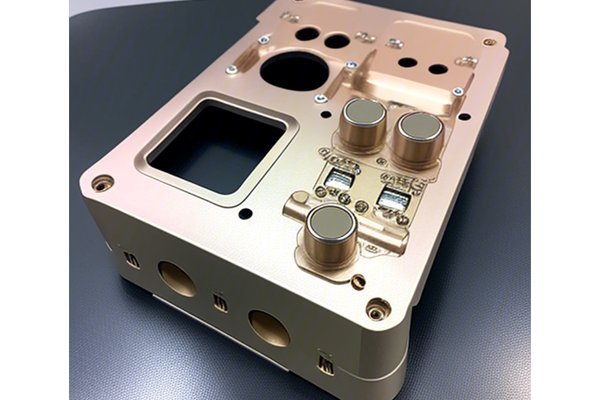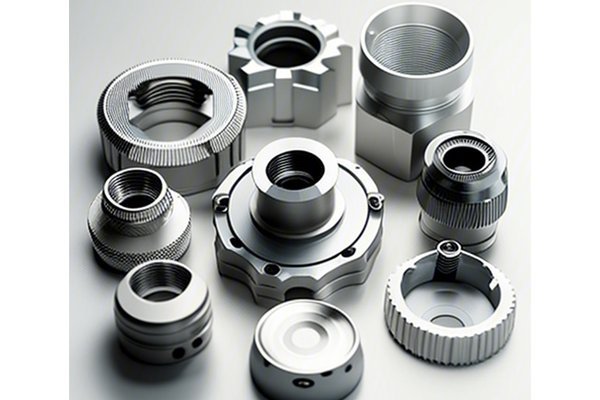Did you know that the aerospace industry is one of the most technology-driven sectors in the world, with a projected global market size of over $1 trillion by 2025? In this rapidly advancing field, the quest for precision, efficiency, and reliability has never been more critical. Enter CNC (Computer Numerical Control) 5-axis milling—a technology that’s revolutionizing the manufacturing of aerospace components. This advanced machining process enables manufacturers to produce complex parts with unparalleled accuracy, which is essential for the demands of modern aircraft and spacecraft.
In this comprehensive blog, we will delve deeply into the benefits of CNC 5-axis milling for aerospace components, exploring its capabilities, applications, challenges, and innovative solutions to maximize its effectiveness. With a focus on detailed solutions and expert insights, this guide is designed for those in the industry seeking to understand why CNC 5-axis milling is not just a trend but a necessity for the future of aerospace manufacturing.
CNC 5-axis milling is a type of CNC machining that allows the cutting tool to move along five different axes simultaneously. Unlike traditional 3-axis milling, which can only move along the X, Y, and Z axes, 5-axis machining enhances flexibility and precision. This technology is essential for creating intricate designs, aerodynamically optimized components, and complex geometries often required in aerospace applications.
This multi-directional capability dramatically reduces the need for tool changes and re-fixturing, leading to higher productivity and reduced lead times.
The aerospace industry requires components that can withstand extreme conditions, from high temperatures to significant pressure changes. The advantages of CNC 5-axis milling provide solutions to these challenges:
2.1 Enhanced Precision and Accuracy
Aerospace components are often subject to strict tolerance requirements. CNC 5-axis milling offers:
2.2 Increased Efficiency and Reduced Production Costs
2.3 Complex Geometries and Design Freedom
The boutique nature of aerospace design often leads to complex shapes that traditional machining cannot handle effectively. CNC 5-axis milling:
2.4 Material Versatility
CNC 5-axis milling supports a wide range of materials commonly used in the aerospace sector, such as:
2.5 Improved Safety and Reduced Waste
The advantages of CNC 5-axis milling open doors to numerous applications within the aerospace industry:
3.1 Aircraft Structural Components
Components such as wings, fuselage frames, and supporting structures benefit from the precision and efficiency of 5-axis milling. The complex shapes and aerodynamic requirements can be achieved more reliably, improving overall aircraft performance.

3.2 Engine Components
Manufacturing precision parts like turbine blades requires advanced technology to meet strict tolerance standards. CNC 5-axis milling can efficiently produce these complex parts while maintaining dimensional accuracy.
3.3 Tooling and Fixtures
5-axis milling is also essential for creating specialized tooling and fixtures that aid in the assembly of aerospace components. The ability to machine these parts quickly and accurately enhances production efficiency.
3.4 Prototyping and Testing
R&D departments in aerospace companies rely on 5-axis milling for rapid prototyping. This enables them to test new designs quickly, allowing for iterative improvements that lead to innovative aircraft.
Despite its many advantages, CNC 5-axis milling does come with challenges that manufacturers must navigate:
4.1 Complexity and Skill Requirement
The operation of 5-axis milling machines requires skilled technicians who are proficient in CNC programming and operation. This necessitates ongoing training and development within companies to maintain competitive edge.
4.2 High Initial Investment
CNC 5-axis machines represent a significant investment, particularly for smaller manufacturers. However, the long-term savings and productivity gains often justify the initial costs.
4.3 Maintenance and Upkeep
Machining centers require regular maintenance to prevent downtime and ensure consistent performance. A well-designed maintenance program is essential to keep equipment running smoothly.
To maximize the benefits of CNC 5-axis milling, organizations can adopt several strategies:
5.1 Invest in Training and Development
Ongoing training in CNC programming, machining techniques, and technology updates for operators will lead to improved operational efficiency and reduce errors.
5.2 Optimize Cutting Parameters
Proper selection of cutting speeds, feeds, and tooling can result in better surface finishes and increased tool life, improving overall machining performance.
5.3 Embrace Automation and Software Advancements
Using advanced CAM (Computer-Aided Manufacturing) software enhances machining processes and allows for more efficient planning and execution of complex projects.
5.4 Implement a Preventive Maintenance Program
Proactive maintenance strategies can mitigate potential downtimes and keep manufacturing processes on schedule.
As the aerospace industry continues to evolve, so too will CNC 5-axis milling. Some emerging trends include:
6.1 Integration of AI and Machine Learning
The application of AI can optimize machining processes in real time, reducing waste and increasing efficiency.
6.2 Advances in Materials
New composite materials are emerging that will require innovative machining solutions. CNC 5-axis milling is likely to adapt to meet these challenges.
6.3 Sustainability in Aerospace Manufacturing
As the industry moves toward more sustainable practices, the precision and waste-reduction capabilities of CNC 5-axis milling will become even more critical.
CNC 5-axis milling is not just a preferred machining method; it’s a necessity in the rapidly advancing aerospace industry. From ensuring precision and reducing lead times to enabling the creation of complex geometries, this technology is paving the way for the future of aerospace manufacturing.
As we’ve explored, the advantages of CNC 5-axis milling extend beyond mere productivity—they play a crucial role in developing safer, more efficient, and innovative aerospace components. For manufacturers looking to stay ahead, embracing the full capabilities of CNC 5-axis machining will undoubtedly be a defining factor in future success.
As you reflect on the insights shared in this blog, consider how CNC 5-axis milling could transform your aerospace manufacturing processes. The quest for precision and efficiency in the aerospace industry is ongoing, and understanding the value of advanced machining techniques will ensure you are well-prepared to meet future demands. The benefits are clear; it is time for your business to take a closer look at implementing CNC 5-axis milling into your operations.






